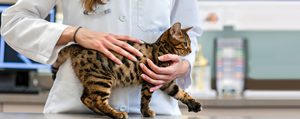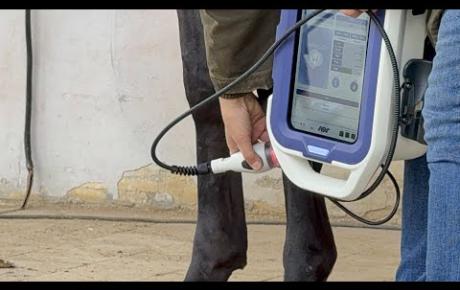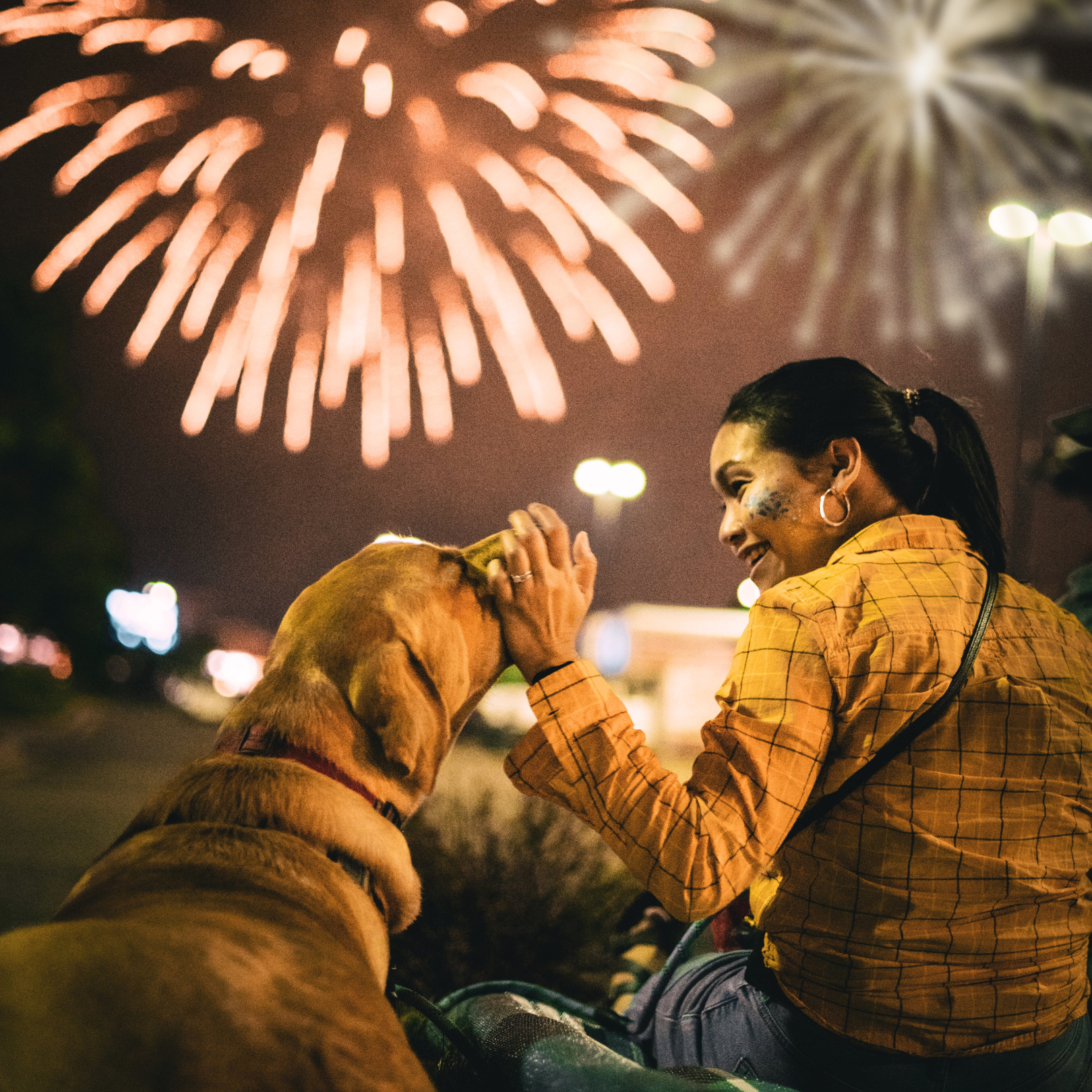Don’t Sweat the Small Stuff!

It’s no good to stress out about your patients… stressing out! You have much bigger things to focus on! Let’s start with the basics – what causes animals to feel anxiety, stress, or fear and why is it happening more often when they come into your office?
Animals generally experience anxiety from these main categories:
- Noise
- New People
- Visual Stimuli
- New Environments
- Other Animals
- Physically Unwell
Animals cannot tell us how they feel; Imagine being in a country where you didn’t understand their language and they didn’t understand yours! It would make you a little anxious alone in the fact that you have no way of communicating for help, or in a time of need. When an animal visits your clinic, they’re most likely experiencing a combination of some or all of the triggers listed above. It’s no wonder they may feel a little stressed!
All animals have different reactions to their fears or anxieties, some of them even turning to aggression which can be the worst case scenario for yourself, employees, or other patients. It is important to understand the cause of your patients’ fears along with noting their reaction to prevent future, or immediate, instances from occurring.
Creating a calming environment and making your patient visits pleasant can be a great way to take some stress off your own shoulders as well!
So, with that said – Let’s get into some tips and tricks to help you out!
1: Train your staff to assess animal stress levels.
Veterinary staff along with pet owners can be educated on how to measure and watch an animal’s stress level to maximize patient care. Here is a handy Animal Stress Chart published by Advanstar Communications, Inc.
It’s important to document these levels along with any previous information you can gather about the animal to have an on-going understanding of their stress levels and solutions that have been discovered previously.
Here are some questions you can have your staff ask pet owners prior/during visit:
- Was the dog or cat afraid before the appointment?
- How could the client tell?
- Is the patient’s fear a concern for the client?
- What does the client do to get the patient ready for an appointment?
- What preventative activities does the client do to prepare the patient for an appointment?
- Any special side notes about the patients stress levels in a clinic setting.
2: Take preventative actions for positive association before visits.
Since animals can associate the veterinary experience with pain or discomfort due to the nature of the majority of visits, it’s important to have some type of positive association before the visit. This will help prevent anxiety build up before the animal reaches the clinic, ultimately reducing the level of stress they are at upon arrival. Here are simple steps that you can educate your pet owners on to create some positive association:
- If the only time animals get in the car is to come to the clinic, and they already have a higher stress level, suggesting the pet owner take animals on rides to random places more often (if possible for them) could help.
- Having the pet owner bring the animal in a little hungry so the are more likely to accept treats in the clinic environment upon arrival. Helping to create a positive association between food and vet visits.
- For high stress scoring patients, it may even be worth asking the pet owner (again if possible for them) to randomly stop at the clinic during business hours and come in to get a treat! So they can have a more relaxed interpretation about a visit in general.
- Making sure patients are educated on carriers and the importance of the animal having enough space, creating comfort-ability, and enough ventilation. It may be that the animal has a bad association with their travel experience instead of the actual clinic.
- Bringing the patients favorite toy or comfort object.
Click here for more calming mechanisms and techniques.
3: Train your staff to greet patients in a truly positive manner.
Animals pick up on human tone of voice and body language, as you already know. So, having a well trained staff to make sure they are greeting pets in a positive welcoming manner can make a nervous animal feel comfort upon arrival. This along with creating a less stressful waiting area may be key to having the visit start out on a good foot – or four 🙂
Do’s:
- Greet in a positive light voice, not too loud. Greeting the pet owner first to show the animal there is established trust may help.
- Ask permission to give the dog a treat. Do so slowly in the best manner and without hovering over animal. Cats who are harness-trained can also receive a treat this way.
- Take slow smooth movements allowing the dog to be aware and not frightened.
Don’ts:
- Reach out to the pet over the desk or counter, as it can be interpreted as threatening to the animal.
- Squat down to be face to face with a dog – Rather squat further away and don’t stare directly at the animal, let them come to you for a treat or a gentle pet.
- Try to excite patients who are clearly nervous, this hyper tone can come off the wrong way and just create more anxiety in the animal.
4: Create a welcoming waiting room.
Since animals may be on their toes due to new smells, noises, new people, and animals, it’s important that you’re creating a less stressful waiting area.
- If a dog is assessed as having a very high stress level and the waiting room is busy, it might be best to have the patient go straight into an exam room if possible (or if the dog is calmer in the vehicle waiting for an exam room, this could be a suggestion).
- Airing out the room or, if possible, having a window open for fresh air will help the smells evacuate and not be so overwhelming for animals.
- Creating a “Cat” vs “Dog” section in the waiting room (if possible) may help separate attitudes and put animals at ease.
- Playing some type of white noise or background noise to offset other sounds that may be present.
- TREATS! Treats, treats, and more treats! Have breed appropriate snacks at the front desk for patients. An obvious solution, however making sure the animal has no allergies first would be a best practice here.
- Having a pre-sprayed towel with designated pheromones to cover cat carriers if need be. Even having an oil defuser with lavender or chamomile could help relax animals (avoid using peppermint or rosemary, as these have been connected with encouraging animals to stand, move, and vocalize).¹
- If your scale is in the waiting room on the floor, having a colored mat over the top of the scale may be helpful. Dogs who are nervous about the movement of the scale once they get on it may be provided some relief when they know its a designated area and not the whole floor in general. Making this more obvious to them may help!
5: Making the exam / procedure as comfortable as possible.
Making sure you are aware of the patients stress level prior to engaging with the animal will be a key way to prepare yourself for what you’re walking into. If the patient is anxious to a point where it may be dangerous for you or the animal to proceed with the visit (and it is a non-mandatory visit) it may be best to reschedule and suggest an anti-anxiety medication for the animal to take prior to the next visit.
- Having non-slip mats on animal exam tables may feel more comfortable and provide a less fearful place for animals to reside during exam. Placing a towel with lavender or chamomile may help to calm dogs as well.
- Managing smells; Cats are very sensitive to smells and dogs may have negative reactions to cleaning products such as bleach. Try to air out rooms as much as possible and use disinfectants that do not have strong odors. Open a window if available to do so, as cats are intrigued by odorant molecules in outdoor scent trails and may pay more attention to them, rather than any stressor scents.²
- Creating “Cat” vs “Dog” exam rooms may minimize scent stress.
- Playing some type of white noise or background noise to reduce sounds coming from waiting room or other parts of the clinic.
- Struggle and stress are lessened if the patient can be examined in natural postures (standing) or in ones comfortable to them (your lap, the client’s lap).²
- Lidocaine or a lidocaine-prilocaine mix can be used prior to taking temperatures or drawing blood (along with butterfly catheters) to lessen the pain associated with the exam rooms.
- If your patient is receiving MLS Laser Therapy post surgery or for pain relief / inflamation, they may be a little hesitant to put on Doggles, or be near the laser therapy machine (therapeutic laser) due to it being a foreign object in their personal space. To reduce this stress:
- Train the pet owner to fasten goggles to the animal if it makes them more comfortable prior to the treatment.
- Give patients treats before or during the treatments.
- Allow pet owners to stay near the animal during the treatments, providing a sense of security through gentle petting (they will also need to wear goggles if this is the case).
- Have the patient’s favorite toy or comfort object brought to the appointment so they can have it during the treatment.
- For high stress level animals, suggest an anti-anxiety medication to take prior to laser therapy.
Hopefully all these tips and tricks combined will help you and your furry friends
lower your stress levels, as we all know – stress stinks!

1.) Graham L., Wells D.L., Hepper P.G. The influence of olfactory stimulation on the behaviour of dogs housed in a rescue shelter. Appl. Anim. Behav. Sci. 2005;91:143–153. doi: 10.1016/j.applanim.2004.08.024.
2.) Staff, D. (2017, May 10). Your complete guide to reducing fear in veterinary patients. Retrieved August 30, 2018, from http://veterinarynews.dvm360.com/your-complete-guide-reducing-fear-veterinary-patients?pageID=4



